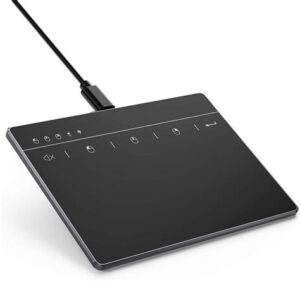I found myself really interested in both the portable scanner and the barcode scanner, which I think is because they have similar qualities to the way they transform information. The portable scanner presents an opportunity to capture and flatten textures found in the wild, and subsequently recontextualize them. The barcode scanner presents the opportunity to flatten an object by reducing it to the number sequence on its barcode (assuming it has a barcode.) This might be kind of an intense proposal for something that quite literally just came to mind, but I’m imagining using the scanner to capture textures and create new forms of camouflage (whether that’s wearable to humans or a means of hiding an object or animal.) Again, the barcode scanner has similar possibilities. I’m imagining replacing objects with their scanned barcode or applying a barcode to an unrelated thing/person/etc… and using it as a fake ID-ing system. That one feels blander than new camo.
I’m including a video of a portable scanner in action. Forgive the fact that it’s a TikTok and the end involves self promo by the creator.
Watch on TikTok






